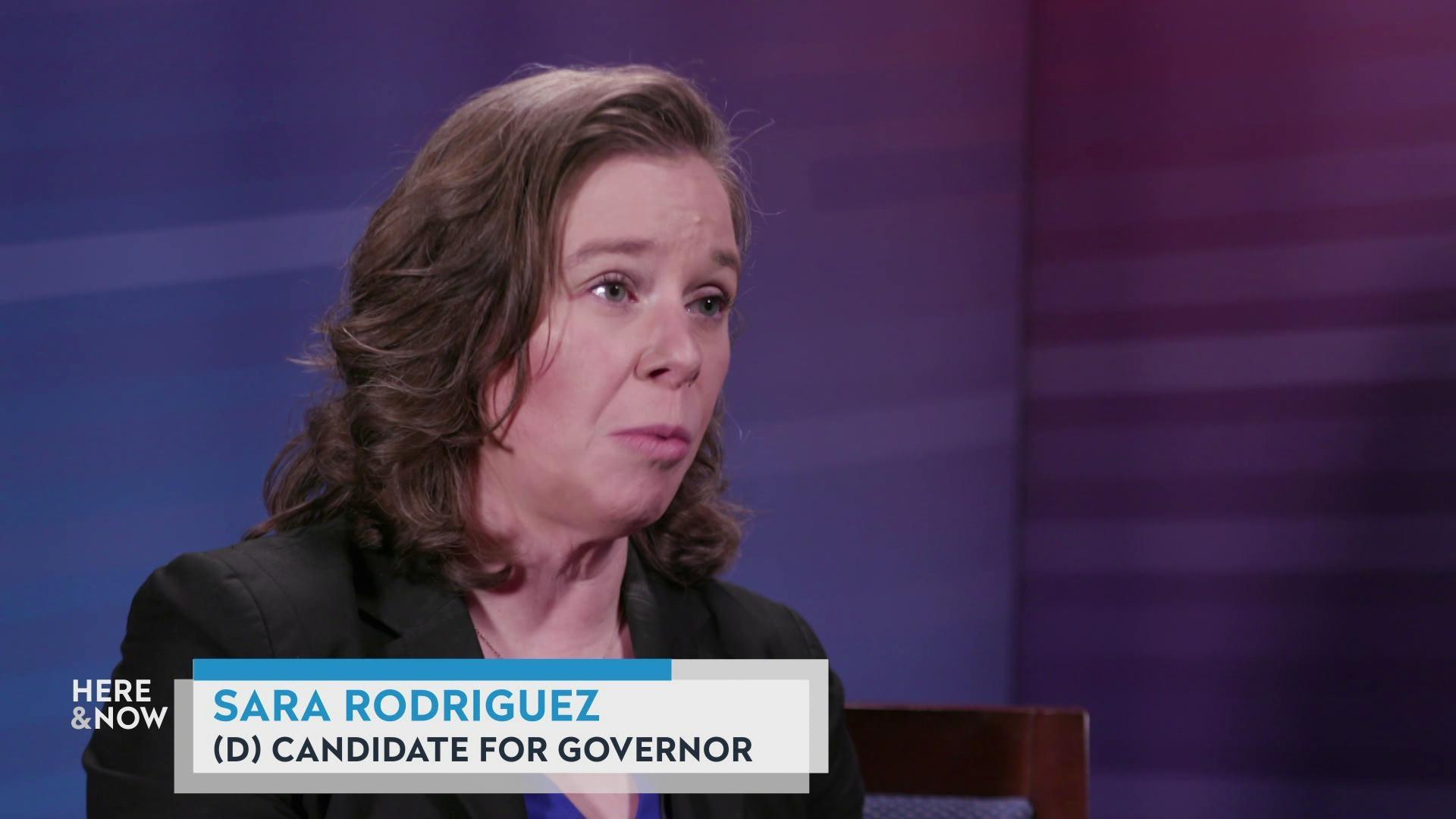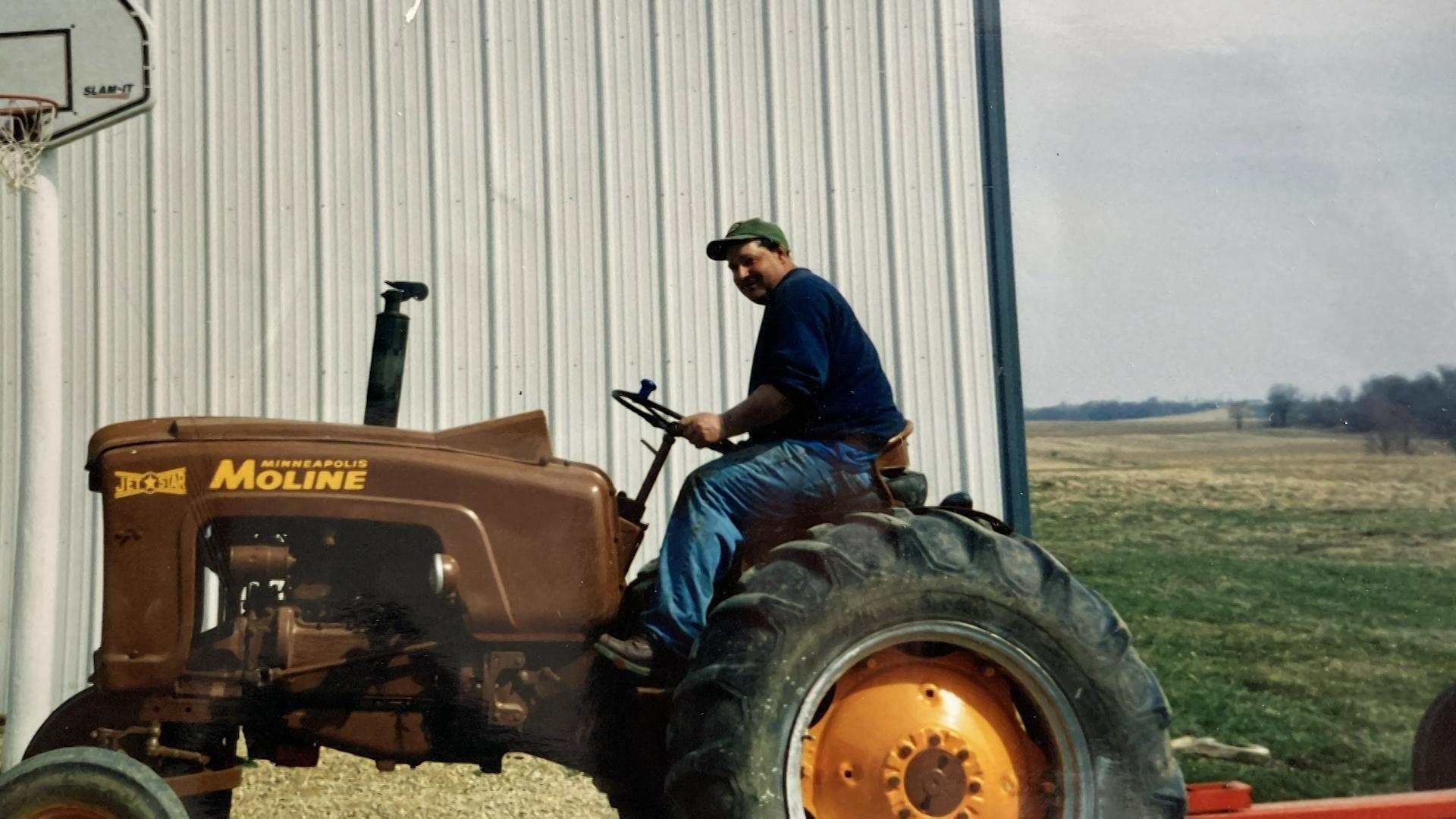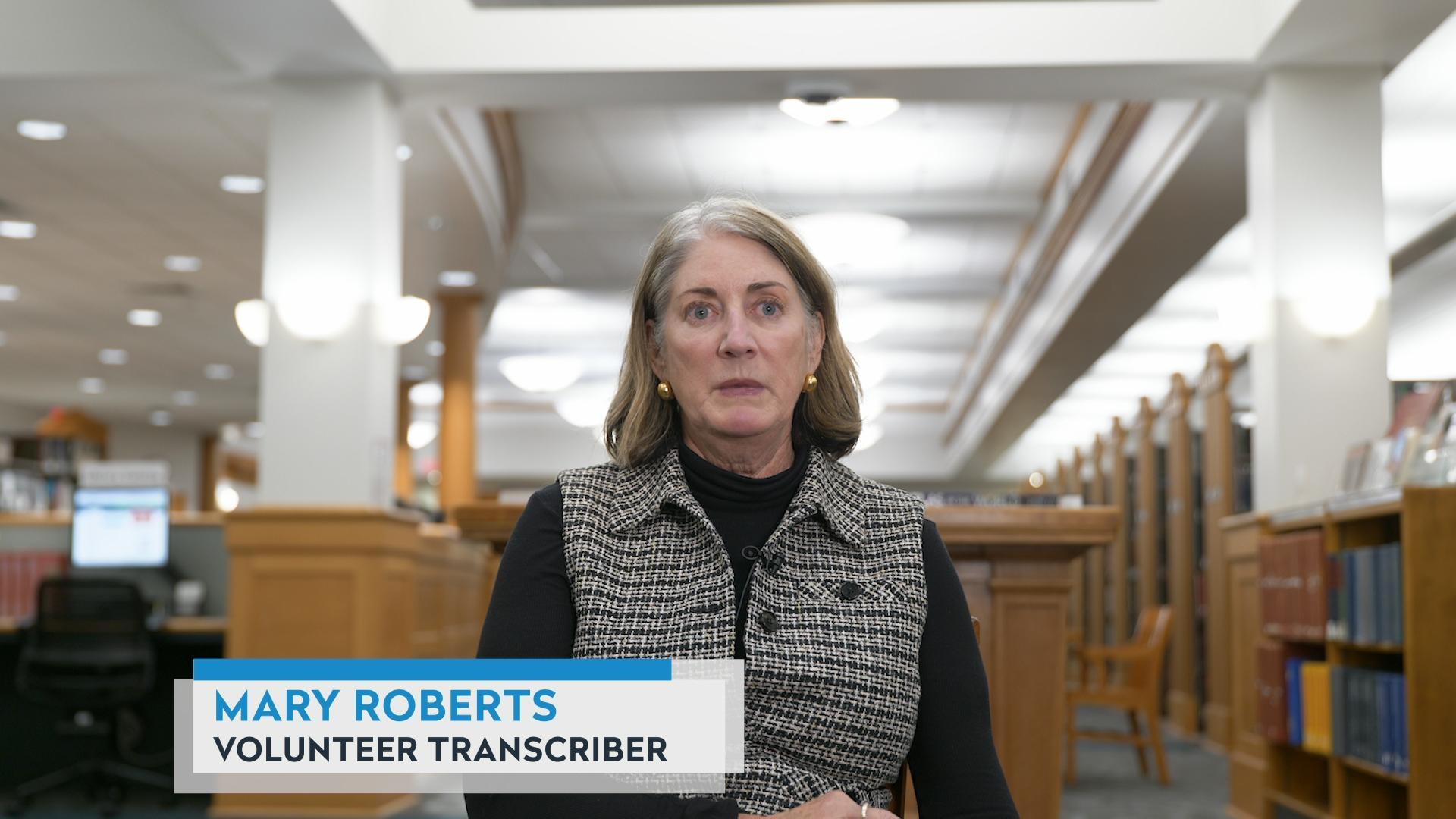Today, we are pleased to introduce Andrew Ruis as part of the Wisconsin Historical Museum’s History Sandwiched In lecture series. The opinions expressed today are those of the presenter and are not necessarily those of the Wisconsin Historical Society or the museum’s employees. Andrew Ruis is a historian of medicine and a learning scientist at the University of Wisconsin-Madison where he is Associate Director for Research of the Epistemic Analytics Lab in the Wisconsin Center for Education Research and a fellow of the medical history and bioethics department. He is the author of “Eating to Learn, Learning to Eat: The Origins of School Lunch in the United States,” as well as numerous articles on the history of food, nutrition, health, learning analytics, and stem and medical education. Here today to discuss how Wisconsin created one of the most extensive systems of rural school lunch programs in the 1910s and 20s, please join me in welcoming Andrew Ruis.
(audience clapping)
– [Andrew] Okay, in the novel, “To Kill a Mockingbird,” the lunch hour at a small country school reveals the deepening plight of the rural poor in 1930s America. “Everybody who goes home to lunch, hold up your hands,” says Miss Caroline, who’s the young and new teacher in Macomb County. The town children did so and she looked this over. Everybody who brings his lunch, put it on top of his desk. Molasses buckets appeared from nowhere, and the ceiling danced with metallic light. Miss Caroline walked up and down the rows, peering and poking into lunch containers, nodding if the contents pleased her, frowning a little at others. She stopped at Walter Cunningham’s desk. “Where is yours?” she asked. “Did you forget your lunch this morning?” said Miss Caroline. Walter looked straight ahead. I saw a muscle jump in his skinny jaw. “Did you forget it this morning?” asked Miss Caroline. Walter’s jaw twitched again. “Yah, mam,” he finally mumbled.
When Walter repeatedly refuses to borrow a quarter from Miss Caroline to buy lunch in town, Scout, the novel’s narrator, explains the situation to her. It was clear enough to the rest of us: Walter Cunningham was sitting there lying his head off. He didn’t forget his lunch, he didn’t have any. He had none today nor would he have any tomorrow or the next day. He had probably never seen three quarters together at the same time in his life. I tried again: “Walter’s one of the Cunninghams.” “The Cunninghams never took anything they can’t pay back.” “You’re shamin’ him, Miss Caroline. “Walter hasn’t got a quarter at home to bring you.”
The American countryside, once symbolic of health and vitality, was rapidly falling behind the modernizing city. For example, if we look at mortality rates in New York City versus rural New York, you can see the darker blue line is New York City. They’re quite high at the turn of the 20th century, much higher than in rural New York, but they’re falling steadily over the ensuing years and actually at about 1910, they’ve come level and after that they continued to decline. And what you see is actually the mortality rate and rural New York stays relatively flat.
What was happening was varied. 1910’s actually the first U.S. Census where more people were living in cities than in the country, but also what we’re seeing is the reflection of the attention that was being paid to the health problems of cities. Municipal sanitation, things like street cleaning, water purification, indoor plumbing, had huge advances in cities and most of these had not been translated into the countryside as of yet. But they were having significant impacts on health in cities. And so what was happening was eventually the countryside was starting to lag behind. Rural schools were also rapidly falling behind their urban counterparts. In 1913, for example, students in rural schools attended an average of only 138 days per year, while students in urban schools attended an average of 184 days per year. And most Wisconsin children attended small rural schools at this time period.
During the 1922-23 school year, for example, one-room schools enrolled 157,000 children in Wisconsin and there were 1,437 schools with no more than 15 students. The quality of these schools was not particularly high. As Thomas Wood, who was professor of physical education at Columbia University, lamented, “The country schoolhouse is the worst, the most insanitary and inadequate type of building in the whole country, including not only buildings for human beings, but also those used for domestic animals. Rural schoolchildren are less healthy and are handicapped by more physical defects than are the children of the cities, including even the children of the slums.” It was difficult to improve this situation due to the decentralized nature of rural schooling, the lowland values and diffused tax base and the high cost of education per pupil. At the same time, the urban schools were building playgrounds and gymnasia, hiring nurses and conducting routine medical inspection of children and expanding the curriculum beyond the three Rs. Rural schools in 1920 differed little from the rural schools of 1820. For the Extension workers, public health nurses, parent-teacher associations, women’s groups, and others who wanted to address malnutrition in rural America, the country school presented numerous challenges.
Most one and two room schools had no kitchen facilities and no plumbing and some didn’t even have a source of fresh water nearby. Yet, reformers hoped that a school lunch program, in addition to addressing hunger and malnourishment directly, would provide an opportunity to teach things like dietetics and nutrition, menu planning, sanitary food handling, proper dish washing, safe disposal of garbage, proper hand washing, and other similar topics. But given the diffusion of rural schooling and a general lack of significant educational funding, school lunch programs were envisioned as cooperative programs between schools and communities. As rural schools across the country began to explore serving food at lunch time, they faced a range of challenges. There were three primary needs for a school lunch program. One, of course, was a source of food. The second being labor, somebody to prepare and serve food and the last being equipment.
Now, food was not typically an obstacle in most rural areas. Rural schools, as I’ve already mentioned, educated relatively small numbers of children, so it didn’t take large amounts of food. Children could easily pool resources for group purchasing, children and families or people could bring in foods from their own gardens and farms and do that cooperative collection of different foods and then figure out what they could actually prepare with what was available. And lastly, most rural lunch programs were designed to supplement home-packed lunch, not replace it, again, for all of the reasons that will become apparent. That was seen as far too big a challenge for most one-room schools to tackle, so they focused on providing one warm dish every day.
Similarly, labor was not a significant challenge either. In part was because, again, we’re talking about relatively small schools, small numbers of children, so this is not industrialized meal preparation like many cities were facing where you had numerous schools with one two even 3,000 students and you had to figure out how to prepare food at that scale but also in most rural programs because they were envisioned as a cooperative program, students, teachers, and community members all participated in the preparation of meals.
But the last need, equipping Schools to prepare even simple dishes could be a significant challenge due to the lack of space and the expense of purchasing kitchenware. The majority of one-room schools in Wisconsin had from 500 to 750 square feet of floor space, that’s not a lot, which had to accommodate heating stove, desks, a small library, and anything else necessary for teaching. This left little room for a kitchen. Even for schools that had the space, equipping a kitchen was not without costs. However, if schools could repurpose their heating stoves for cooking and if children could bring their own plates, cups, and utensils, the costs could be minimized. For example, Nellie Farnsworth, a home economist from South Dakota, suggested that schools could prepare one hot dish each day with only $11.50 worth of equipment, the equivalent of about nine days’ wages for a farm laborer.
Schools raised the money in various ways. In New Hope, Wisconsin, one school used district funds to buy an oil stove and money raised from school socials to purchase cooking utensils. The combination of public and private funding made possible to begin a hot lunch program at that school. While many schools repurposed the heating stove for cooking, this was not always easy. The typical unjacketed heating stove used in most rural schools until the 1920s and still common in the 1930s had no horizontal surface on which to cook. So you can see on this stove, for example, as a peaked or domed top on it, so there’s nowhere you could actually set something to heat it up. Most heating stoves were vertically-oriented like this one as well, so they’re built to be tall and narrow rather than squat and broad. And temperature control, as anybody who’s ever used a wood stove, was quite challenging. Students would routinely complain that they sat just a little too close to the stove, it would be tropical and they’d be sweltering, even just one foot farther away and they’d be shivering and freezing.
Yet, many schools figured out how to do things like bake potatoes in the ash pan of the school, cook casseroles between the door and the firebox, or construct metal racks so that a flat surface could be made on top of the stove for cooking soups or similar things in a kettle. While this ingenuity often meant that children could be served a warm dish at lunch time, some commentators remarked on the stinginess of rural school boards. As one Extension worker from Illinois put it, in 1921, “In a number of schools, the hot lunch has been prepared over the school heater. If it were a question of feeding the stock, the necessary $25 or $30 for a good kerosene stove, double boiler, and other utensils would be spent without question.”
Other innovations allowed for warm dishes to be brought from elsewhere. For example, a fireless cooker could be easily made and instructions were widely disseminated. The fireless cooker– and this is one example of the instructions on how to construct one: consisted of a pot tightly nestled within an insulated container. To use it, one would prepare a stew, cereal, or other similar dish in the inner pot, bring it to boiling on a stove, and then place it within the insulated container where it would continue to cook for the next several hours. If this were done in the morning, the fireless cooker could be transported to the school and at lunchtime the teacher could simply remove the lids and serve a hot, fully-cooked dish.
Another popular innovation was the pint jar method, which was developed around 1920. Also known as the Wisconsin method, because it was created by Jeanette Pugh, a public health nurse from Wisconsin, the pint jar method was widely adopted. Dishes such as soups, stews, pudding, cereals and cocoa could be distributed among jars and placed in a metal rack, which is, in turn, placed in a wash boiler. These metal racks are basically the kind of metal racks that were used commonly in cannings, so they would have been readily available. 30 to 60 minutes before the lunch break, the teacher simply had to pour a little water in the boiler, put the lid on it and place it on the stove. At the noon recess, the teacher then distributed the jars and the children had a warm dish to eat. So this was a way of compartmentalizing all the different meals and heating them up individually.
Now, Wisconsin, was somewhat remarkable in its school lunch development. So, this graph is showing schools with hot lunch programs in the entire state from 1918, the level for 1918 as an estimate because there wasn’t good data available, up through 1933, and what you can see is that there’s a significant increase in these early years. Now, Wisconsin was remarkable in a couple of ways that are worth keeping in mind as we get into the next part of the presentation. So one of them was that Wisconsin was one of only two states that actually authorized the expenditure of public funds on feeding children. The other state was Vermont. This was due to the Smith-Bray Bill, which was passed, I believe, in 1917, but it actually allowed school boards to expend money, not just on things like equipment or on things like labor, but actually to purchase and distribute food.
This was one of the major challenges that most lunch programs in the U.S. faced as they were being developed, is that, in many cases, school boards didn’t have the legal authority to do it. Most school legislation was passed long before any school district or city, even really considered the idea of school lunches. So by the time they do, there’s not really good provision, legal provision, for doing so. So a lot of schools actually had to rely on what was effectively, a capitalist model of school lunch provision so they would basically charge students cost. Then in order to give free or reduced-price meals to poor children they had to get money from private charity in order to fund that, essentially. They created real challenges for most places to develop these kind of programs. So Wisconsin was one of the few that that was not a significant challenge. So these, these legal restrictions on expenditure and public funds were just not as significant in the state.
So beyond that, why then did Wisconsin see such a significant increase in the number of schools with hot lunch programs and to put a fine point on it. By 1922, nearly half of schools and across the state, have some kind of semi-permanent lunch program instituted in this school, and that’s staggering. That’s huge compared to basically any other location. You’ll notice, of course, when the depression hits there’s a little bit of a drop-off, but even in 1933, one of the worst years of the depression, there’s still more than 30% of schools that have a regular hot lunch program and that’s again, well above what you would see in most states. So, why? Why did this happen in Wisconsin and not in other places? Obviously the lack of legal restrictions is an important explanation, but I actually would argue that that by itself really doesn’t explain it. What we really need to do is to understand how the work of, in particular, the UW-Extension Service, and two women in particular who worked for the UW-Extension Service really drove interest in this and really, convinced a lot of schools, again, most of them rural schools, that this was something worth pursuing.
Those two women were Nellie Kedzie Jones, who was essentially in a leadership position at the Extension Service and Gladys Sally Stillman, who I don’t have a picture of, but who was the author of “The Hot Lunch in Rural Schools,” which is a pamphlet that the UW-Extension Service produced and distributed. This pamphlet went through four editions and the first edition alone distributed 40,000 copies throughout the state. Now, Stillman comes into the Extension Service in 1919 and she really wants to focus on milk and lunch programs. She sees this as a significant need in the state due to high levels of malnourishment among children, but she also sees that as a way for the Extension Service to make a big impact on rural communities. So with Nellie Kedzie Jones’s support and input, Stillman begins a tour of seven Wisconsin counties in November of 1919.
So she visits Barron, Lafayette, Lincoln, Portage, Rock, Shawano and Winnebago Counties. And she gives lectures and demonstrations and works with local health authorities and teachers to establish school lunch programs. So for the counties that she visited, the number on the left is the number of lectures that she gave, so these were public lectures, where she would go to town halls or churches, places like that, and talk to communities, essentially. And the number on the right, would be the number of demonstrations. So, demonstrations she would actually go into a school and literally show them how to do something like this. Show them how the pint jar method works or how to build a fireless cooker or how to work with communities to raise funds or to develop cooperative food donation programs and things like that.
Stillman’s work proved tremendously successful. In the 1918-1919 school year, before she began this campaign, just 215 of the roughly 6,500 rural schools in Wisconsin served a hotdish to pupils. So that’s only about 3% of schools at this point. The following year, which is again the year when she begins this campaign, 1,551 schools are implementing some kind of hot lunch programs. It goes from 3% to 24% from one school year to the next and by the 1920-21 school year, 3,148 rural schools, out of roughly 6,500, or nearly half, are serving some kind of hotdish or hot meal in the schools. So to put this in perspective, only 346 rural Illinois schools served a hotdish or meal in 1921, even though Illinois had a rural population of 2.1 million people and Wisconsin had a rural population of only 1.4 million people. So the next time you need to brag about Wisconsin being a better state than Illinois, you now have more ammunition.
In reports sent to the Extension Service from lunch programs that Stillman had helped to initiate, teachers reported improved health, better school performance and even improvements in the quality and types of food that children brought from home. And this was actually a big goal of the rural programs, was that, again, because they were designed to supplement the food brought from home that it would actually call more attention to the kinds of foods that parents sent to school with their children and the idea was that there’d be a trickle-up effect, that as kids learned more about the program and as communities learn more about the program, there would be sort of an educational component where parents would prepare better meals for their kids. Now, before we entirely throw parents under the bus, it’s also important to remember that kids are attending rural schools largely in the winter months. Wisconsin is a cold place as anybody who’s been outside today knows. And so, if you are traveling anywhere from one to two miles each way to get to school, which was not uncommon at this time, and you are carrying your lunch in a metal pail and, of course, metal conducts cold quite well, by the time you get to school, your lunch has frozen solid. In order to eat that lunch, you then have to figure out exactly how close to put it to the heating stove so that it defrosts by noon, but doesn’t turn into a soggy mess. You’re trying to rotate it. You’re trying to do anything you can to make what’s in that pail edible. So this was a big problem for rural schools and a big reason for these kinds of programs, the idea of being able to supply that warm meal, that warm dish that would supplement things that kids can bring. It actually meant that kids can bring different kinds of foods things that would travel better or less liable to freeze and that sort of thing.
By the late 1920s, after this work that Stillman does over the course of several years to really interest rural schools and these kinds of programs, the State Superintendent had developed a general recommendation on the importance of school lunches. “It is very desirable for the health of the children that a warm dish we serve in every rural school throughout the school year. The pint jar method is found to be the simplest and perhaps the most satisfactory method to use and providing this warm dish. We find in many schools very fine control of the lunch period, meaning that, it’s well organized and, again, there’s this sort of careful collaboration between the schools and the communities. Much should be done to train children to proper lunch habits in every way.” So there’s this idea that by the end of, literally about a decade, these rural lunch programs were so common and also so popular that you know the state superintendent of education is saying, “Look, every rural school should do this.” And inspections of schools, which were routine practice, which had prior to this time period not focused at all on whether the school served warm or hot lunch of any kind, actually began to include regular reports on whether or not a school lunch was being conducted, and if it wasn’t often recommended that it should be started and sometimes these reports even gave advice about how to get them going.
The other thing I think worth emphasizing about why the state superintendent is putting particular emphasis on the pint jar method, not just from state pride given that it’s something that’s developed in Wisconsin, ends up being adopted all over the US. But that it was actually a very flexible way of providing meals because it meant that schools that were able to bring food in could actually do some of the preparation at the school involving the students and that kind of thing, but it can also be something that parents could prepare something and send it to school with kids so the kids can literally bring their pint jar of whatever it is, it could freeze solid on the way to school and then this method would actually make it possible to have that be warm and appetizing at lunchtime. It also solved other problems, you didn’t necessarily need separate dishes or you could eat whatever it was straight out of the jar. Some kids used this half pint jar, some the full pint size. But either way, these were often things that you could eat straight out of the jars, so you only needed to bring that and a spoon and you were set to go. In addition, you didn’t have to do the dishes at the school. Water scarcity was not as common in Wisconsin as it would have been in many other states, places like New Mexico or Wyoming, that kind of thing, but not all schools had a well on the property or had an easy source of water and so dish washing can be a challenge. Again, the pint jar method, at the end you just screw the cap back on and it goes home with the kids and they can take care of that at home. So it was very much the easiest sort of program for a school to implement.
It just required very little equipment, it required very little funding, and it’s solving a lot of the problems that especially the poorest rural schools were facing. So while the country school was not able to replicate the comprehensiveness of the meal programs that were available at many urban schools, rural communities were able to accomplish significant nutritional health work, despite the limitations of geography and resources. Now if this has wet your appetite so to speak for learning a lot more about school lunches, I did write an entire book about the topic. This all comes from one chapter. There are, I believe, copies available. And if anybody, you know, is interested in learning more, this can be your next step. Once again, thank you very much for having me and I’d be happy to answer any questions you have.
(audience clapping)
Search University Place Episodes
News Stories from PBS Wisconsin

Donate to sign up. Activate and sign in to Passport. It's that easy to help PBS Wisconsin serve your community through media that educates, inspires, and entertains.
Make your membership gift today
Only for new users: Activate Passport using your code or email address
Already a member?
Look up my account
Need some help? Go to FAQ or visit PBS Passport Help
Need help accessing PBS Wisconsin anywhere?

Online Access | Platform & Device Access | Cable or Satellite Access | Over-The-Air Access
Visit Access Guide
Need help accessing PBS Wisconsin anywhere?

Visit Our
Live TV Access Guide
Online AccessPlatform & Device Access
Cable or Satellite Access
Over-The-Air Access
Visit Access Guide
 Passport
Passport


















Follow Us